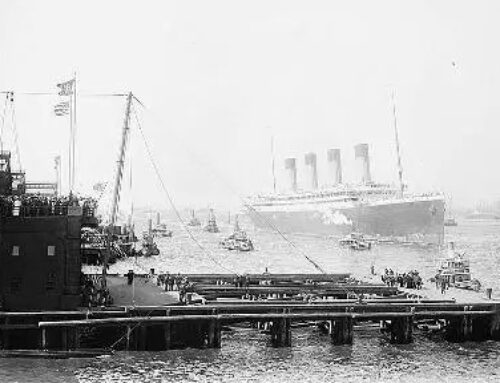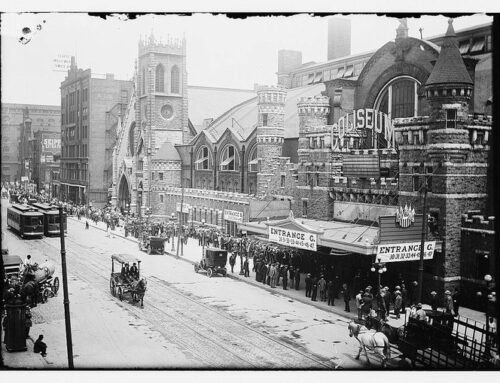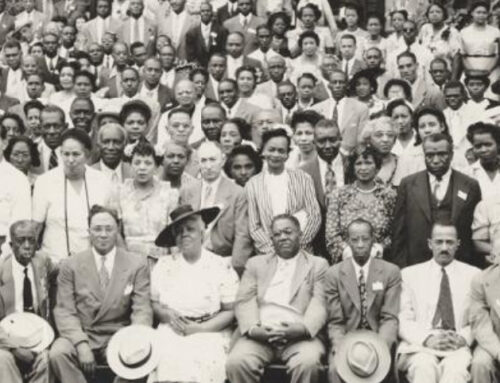Identifying the woman who wrote the The Bondwoman’s Narrative is the subject of a great article at the New York Times today.
In 2002, an 1850s novel written by a fugitive formerly enslaved woman was published and became a best-seller. But the true identity of the author, who used the pen name Hannah Crafts, was unknown. Publishers’ Weekly writes:
Nothing intrigues quite the way an old manuscript does: there’s the story told in its pages, but there’s also the story of the pages. In this volume’s lively, provocative introduction, [Dr. Henry Louis] Gates, Harvard chair of African-American studies, describes his discovery of a handwritten manuscript from the collection of Dorothy Porter Wesley, the famous Howard University librarian, in an auction – identified in the auction catalogue as [an unpublished, clothbound manuscript thought to date from the 1850s: “The Bondwoman’s Narrative, by Hannah Crafts, a Fugitive Slave, Recently Escaped from North Carolina.”]
Gates realized that, if genuine, this would be the first novel known to have been written by a black woman in America, as well as the only one by a fugitive slave. … After purchasing it, he undertook the painstaking work of authenticating it and determining its author. Though Dr. Joe Nickell (the sleuth who proved the Jack the Ripper diaries fraudulent) firmly limits the manuscript’s composition to 1853 to 1861 and Gates locates a few candidates for authorship, the historical Hannah Crafts remains elusive. Whoever Hannah Crafts was–and about that there is sure to be some discussion–she was a talented storyteller.
Though Crafts appears self-taught and borrows from many sources–influences include other slave narratives, 19th-century sentimental and gothic novels and, as Gates noted in a letter to the New Yorker, Charles Dickens–she propels her story along, vividly describing the heroes and villains she entangles in her multiple plots. A mulatto, Hannah grows up a house slave in Virginia, learning to read in secret. When her master at last marries, Hannah becomes a maid to the new mistress, a woman who seems haunted. In fact, she is hunted: someone who holds proof that her mother is a slave is blackmailing her. Knowing her mistress will be sold if exposed, Hannah encourages her to flee, and flees with her. Thus begins Hannah’s journey, as she passes through the hands of prison guard, slave trader, benevolent caretaker, mean and petty masters and finally to freedom.
The style is sentimental and effusive, but it is also winning. Crafts’s portrayal of the Wheelers–a small-minded but ambitious couple who prefer to “live at the public expense”–is incisive and utterly familiar. Though Gates chose to touch up Crafts’s punctuation, he left her spelling as is and included her revisions, which were remarkably few. Crafts clearly understood the needs of her narrative and the conventions of the 19th-century novel in a way that many first novelists (of any century) don’t. While scholars will have to decide whether this is “the unadulterated ‘voice’ of the fugitive slave herself,” lay readers can simply enjoy Crafts’s remarkable story and Gates’s own story of discovering her.
After years of research, Gregg Hecimovich, an English professor at Winthrop University in Rock Hill, S.C., believes the author of The Bondwoman’s Narrative is Hannah Bond, an enslaved woman on a North Carolina plantation owned by John Hill Wheeler.
Dr. Hecimovich began his research in 2003 at various archives, finding descendants of the Wheeler family, conducting interviews, deciphering documents and encountering many brick walls.
Dr. Hecimovich’s research “offers insight into one of the central mysteries of the novel, believed to be semi-autobiographical: how a house slave with limited access to education and books was heavily influenced by the great literature of her time, like “Bleak House” and “Jane Eyre,” and how she managed to pull off a daring escape from servitude, disguised as a man.”
Well done, Drs. Gates and Hecimovich. Meet Hannah Bond, the woman who wrote the Bondwoman’s Narrative.





Leave a Reply